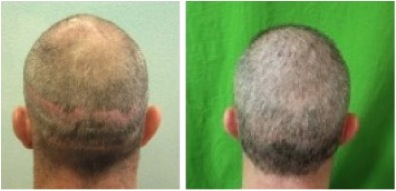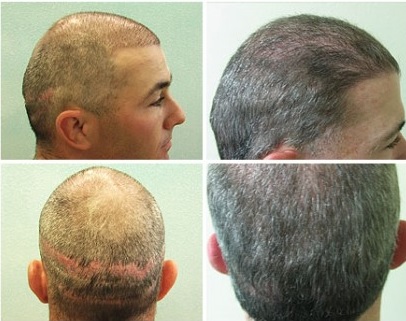How Follicular Unit Transplant Works
FUT excises the donor hair in a long, horizontal strip of flesh from the mid-rear portion of the scalp. This area, known as the “safe donor zone” is slightly different for each patient, but rests in such a place that the resulting scar should theoretically be easy to conceal with a half-inch of hair. Once the strip is excised and the wound stitched or stapled closed, technicians dissect the flesh into follicular units to be implanted into the recipient area.
How Follicular Unit Transplant Strip Scar creates need for hair transplant repair
There are a few main reasons FUT might cause problems for a patient in the long run. Any of the following reasons have brought patients to DermHair Clinic, seeking a second corrective surgery with the use of follicular unit extraction’s more versatile capabilities. Reasons for hair transplant repair may include:
- The linear scar, touted by many physicians to be “paper thin” widens with time and aging. It is natural for the skin to lose density and elasticity as we get older, thus the skin stretches and scars stretch with it.

Follicular Unit Transplant Strip Scar repairded by UGraft hair transplant repair*
- The hairline is made up of harsh, dense hairs instead of the finer hairs that would naturally be found along the hairline. Because of the fact that follicular unit transplant extracts hairs from the place on the scalp where they naturally grow thickest.
- FUT is limited by its own nature—that is, its invasive method of extraction eventually renders it inadequate. Follicular unit transplant is stuck using only mid-rear scalp donor hair, which means prior patients who are losing more and more hair with age are forced to seek a more advanced method of hair restoration—a method like FUE, that branches outside the traditional donor zone.

